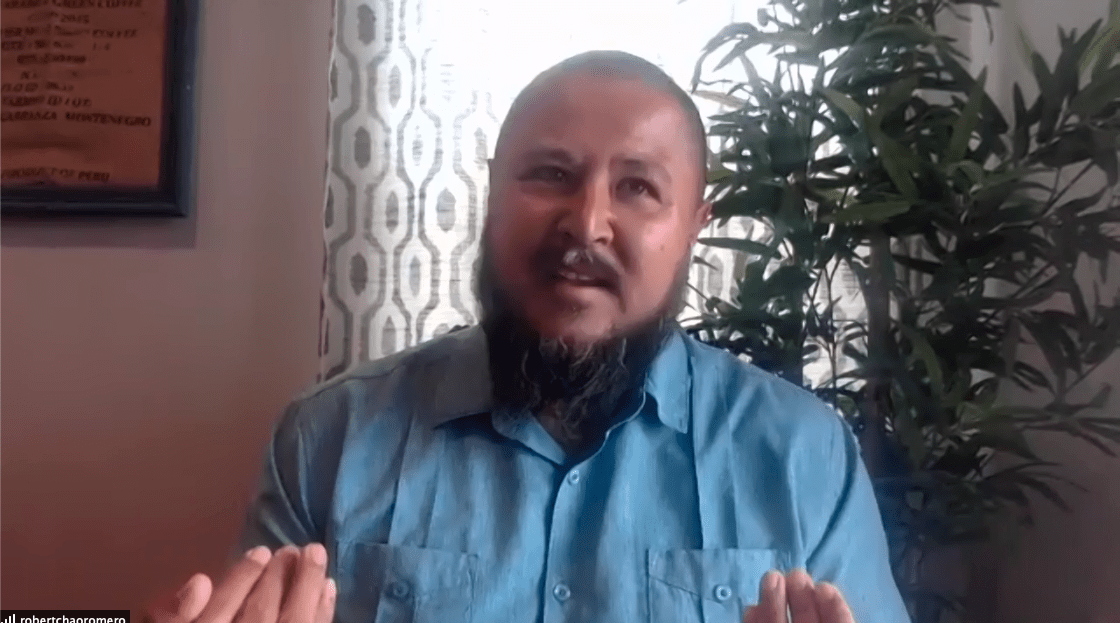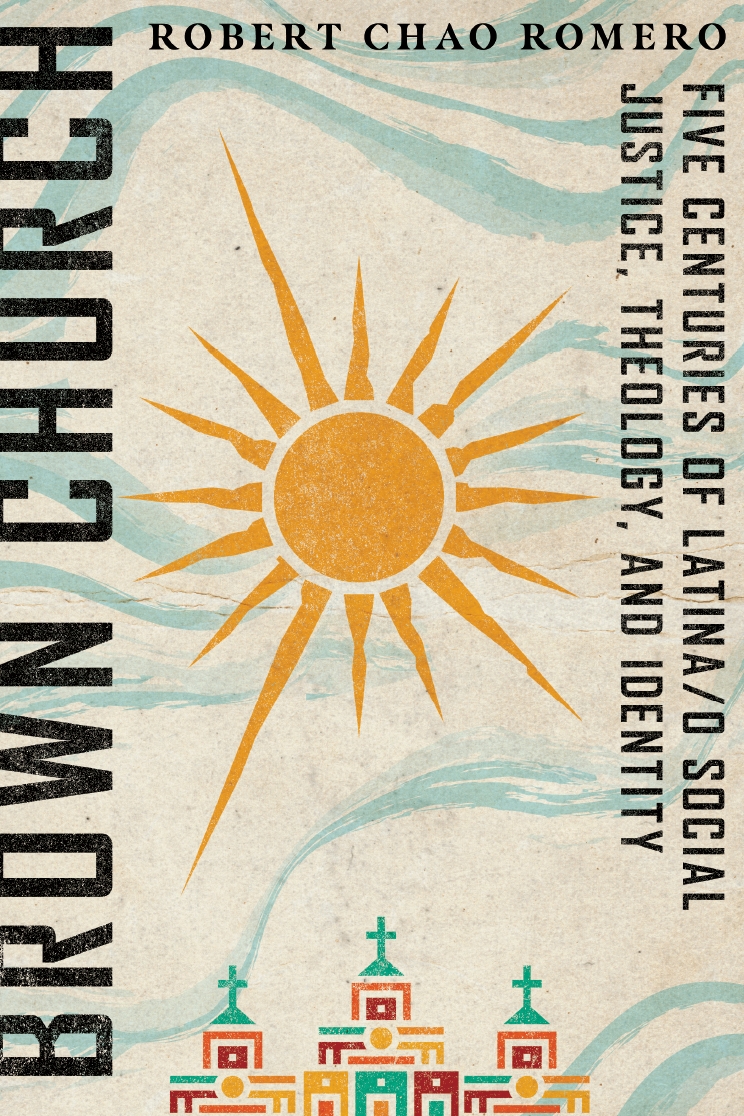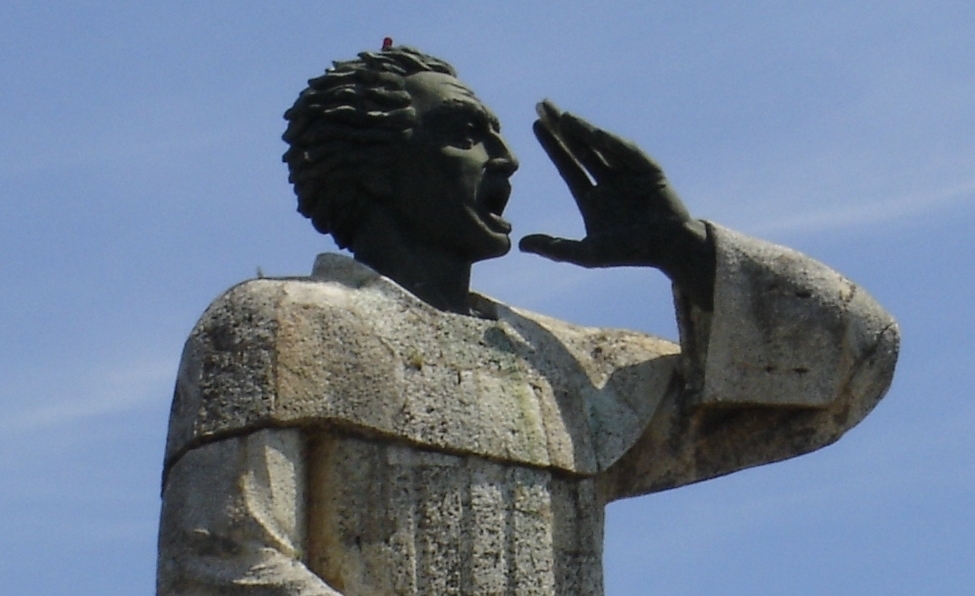Are Christianity and social justice incompatible? Or are they deeply integrated in ways that many Americans have forgotten or ignored?
According to Robert Chao Romero, author of the new book Brown Church, Christians have much to learn from a 500 year history of Latina/o social justice, theology, and identity that even many Latina/os are unfamiliar with.

Speaking today at the Emerging Scholars Network is Dr. Robert Chao Romero (@ProfeChaoRomero), author of The Brown Church: Five Centuries of Latina/o Social Justice, Theology, and Identity. Robert is an associate professor of Chicano Studies and Asian American Studies at UCLA. He has a PhD from UCLA and a JD from UC Berkeley. With a Mexican father from Chihuahua and a Chinese immigrant mother from Hubei in central China, Robert’s dual cultural heritage serves as the basis for his academic work. Romero is also an ordained minister and co-founder of Jesus 4 Revolutionaries and co-chair of the Matthew 25 Movement. I blogged one of Robert’s talks in 2017.
 The Christian Social Justice Borderlands
The Christian Social Justice Borderlands
Robert opens by telling us about a course called “The Brown Church” that he taught this quarter at UCLA. After the quarter, the student wrote him this note (rough paraphrase below):
“As a Latino growing up as the son of an undocumented pastor in the Midwest, my experience was different from those who surrounded me… My white peers accepted me as a part of their denomination, but I was not accepted because of my skin color, race, and undocumented status. I wanted to believe in what my family and church taught me as true… I would ask myself how I could identify with such people. Even to this day, those people referred to me as ‘wetbacks,’ ‘beaners,’ and ‘spics.'”
Robert says that this student was caught in what he describes as the “Christian social justice borderlands.” Many students of color come to university with a Catholic or Pentecostal background. In classes, they learn how to think about injustice and they hang out in activist circles. Students start to wonder if it’s possible to be a Christian and care about justice. Their activists friends ask, isn’t Christianity just a white man’s colonizing religion? Then in churches, people tell them that their passions for justice are just leftist/secular interests. Robert expects that hundreds of thousands of Latina/o students in the US feel stuck in this borderland.
Religious education in America has a parallel problem. In many seminaries and religion courses, the history of the Brown Church isn’t even mentioned. That leads many Latina/os to wonder if we have a history at all.
Romero wrote Brown Church for Latina/o Christians in these borderlands so we could learn the history of Christian social justice efforts and find a home in that tradition.

Statue of Antonio Montesino in the Dominican Republic. CC-B-3.0
The Brown Church
What is the Brown Church? Robert calls it a prophetic, ecclesial community of Latinas and Latinos who have contested social justice in Latin America and the United States for the last 500 years. Romero points out actions by Brown Church figures like Antonio de Montesinos predate Martin Luther’s 95 Theses. Robert sees the Brown Church as a category that transcends theological, social, political, and economic dimensions.
What does the word Brown mean? Robert points out that Latina/os come in many colors. He says that the idea of “Brown” is a metaphor, one that describes racial liminality in the U.S., where so much of society has been built around legal binaries of white and black. To illustrate this, Robert tells us about Latino segregation during the era of Jim Crow. Schools, churches, hospitals, pools, and national parks were segregated. In many cases in the early 20th century, Latinos would argue that they shouldn’t be segregated—not because segregation was wrong, instead arguing that Latinos were white. While people would often win in court, they would still go home and experience discrimination anyway. Even today, many Latinos/Latinas have had the option of “slipping into whiteness” if they got enough degrees or money, but most have not..
Latina/o Christian Community Cultural Wealth
In his new book Brown Church, Robert is trying to bridge between conversations in critical race theory with conversations about Christian theology for a public audience. To social scientists, the book describes what Tara J. Yosso describes as community cultural wealth and what Julie Park calls spiritual capital that communities of color possess.
What is that wealth? Robert shares a two examples from Latina/o theology:
Why is it important that Jesus is from Galilee? As Virgilio Elizondo pointed out in Galilean Journey, people from Galilee were bilinguals who were rejected by religious and intellectual elites of Jesus’s time. If Christians want to know what it means to follow Jesus, we should think about centering Christian thought and work with people who are similarly marginalized.
Robert also tells us about the idea of Mission Integral, an idea developed by Rene Padilla and Samuel Escobar in the mid-20th century. As evangelical theologians trained in the United States, they struggled to reach people in Latin America who faced urgent questions related to oppression and revolution. They observed that in the US individualist gospel, racist people could continue to be racist and exploiters could continue to exploit. Individualist Christians could condemn violence but be silent on war or police violence. Padilla described Mission Integral as a plane with two wings: “Evangelism and social action are both integral to Christian mission and cannot be artificially divided one from another.” Trying to separate these two things would be similar to asking about the relative importance of the right wing of a plane to the left.
Brown Church includes the following chapters:
- El Plan Espiritual del Galilee
- Las Casas, La Virgen de Guadelupe, and the Birth of the Brown Church
- Multicultural Voices of Colonial Resistance: Garcilaso de la Vega el Inca, Guaman Poma, and Sor Juana Innés de la Cruz
- Padre Antonio José Martinez, the U.S.-Mexico War, and the Birth of “Brown”
- The Spiritual Praxis of César Chavez
- Social Justice Theologies of Latin America: Liberation Theology and Misión Integral
- Liberation Theology in Practice: Archbishop Óscar Romero of El Salvador
- Recent Social Justice Theologies of U.S. Latina/os: Latina/o Theology, Mujerista Theology, and Latina/o Practical Theology
What White Christians Can Learn from the Brown Church
In the Q&A, someone asks Robert about what wider Christianity can learn from the Brown Church. Robert describes how white Christians can sometimes get stuck de-constructing problems in the history and culture of Christianity after they start to see those problems. Robert hopes that the long history in the Brown Church of thinking about Christianity and social justice will inspire and inform constructive action by the white Christians in the US.
Robert ends by quoting a letter he received from a reader, who said that the book was like a home he had been seeking for a long time—and which had been there all along. That’s his hope for this book.
J. Nathan Matias (@natematias), who recently completed a PhD at the MIT Media Lab and Center for Civic Media, researches factors that contribute to flourishing participation online, developing tested ideas for safe, fair, creative, and effective societies. Starting in September 2017, Nathan will be a post-doctoral researcher at the Princeton Center for Information Technology Policy, as well as the departments of psychology and sociology department
Nathan has a background in technology startups and charities focused on creative learning, journalism, and civic life. He was a Davies-Jackson Scholar at the University of Cambridge from 2006-2008.

Leave a Reply